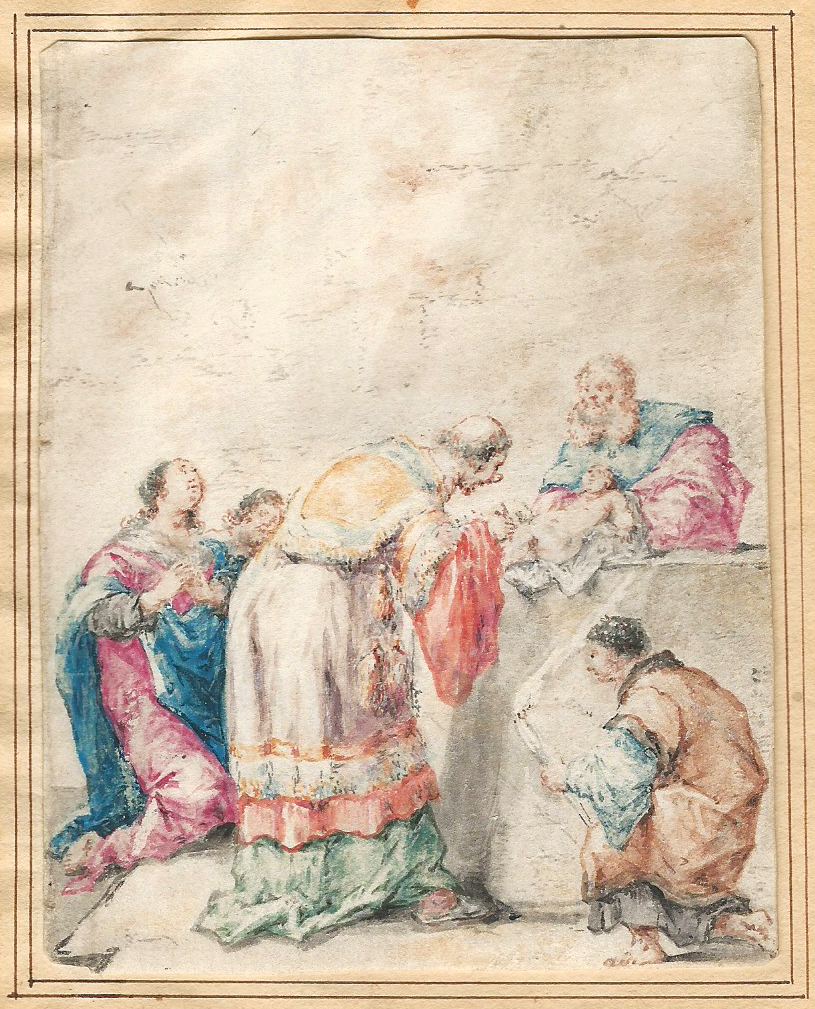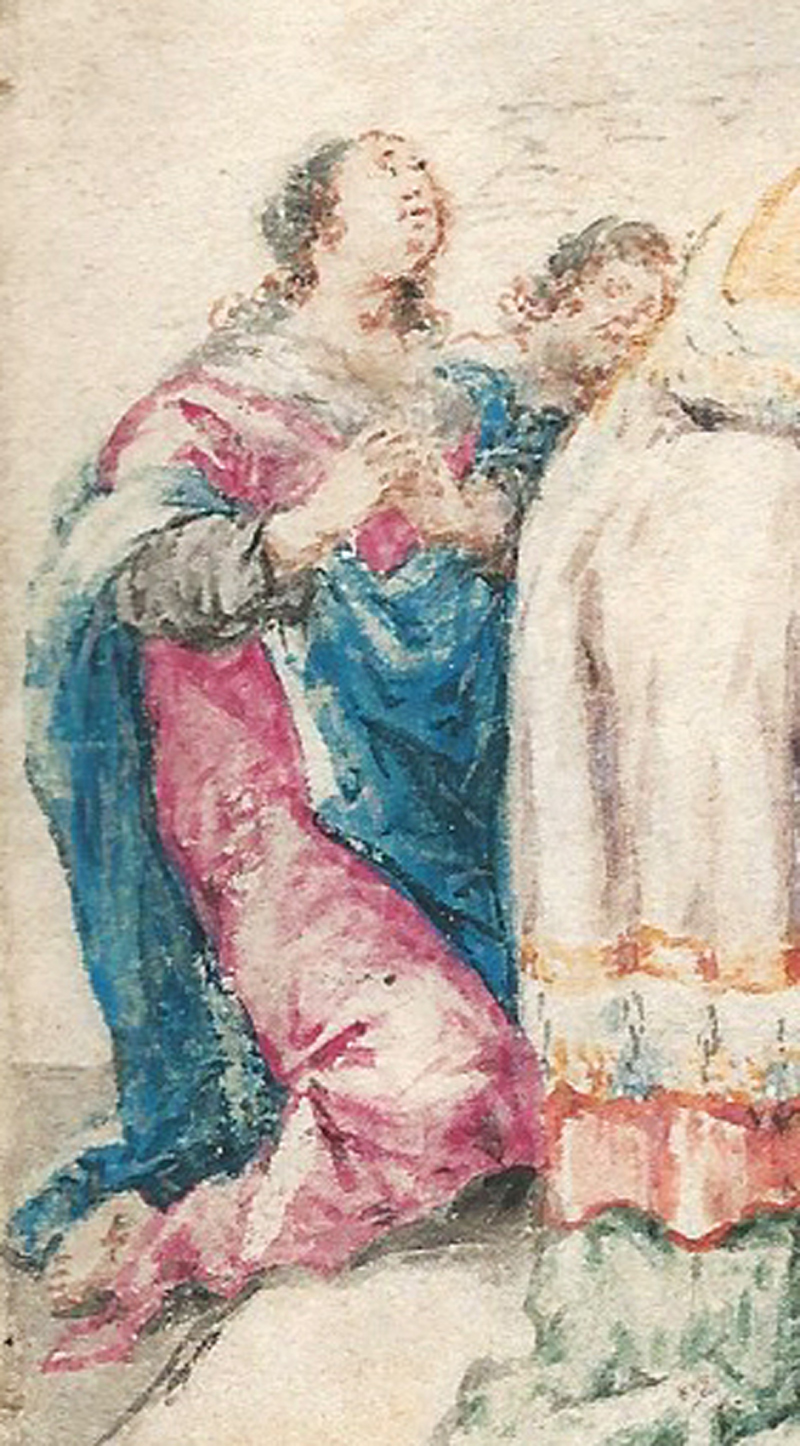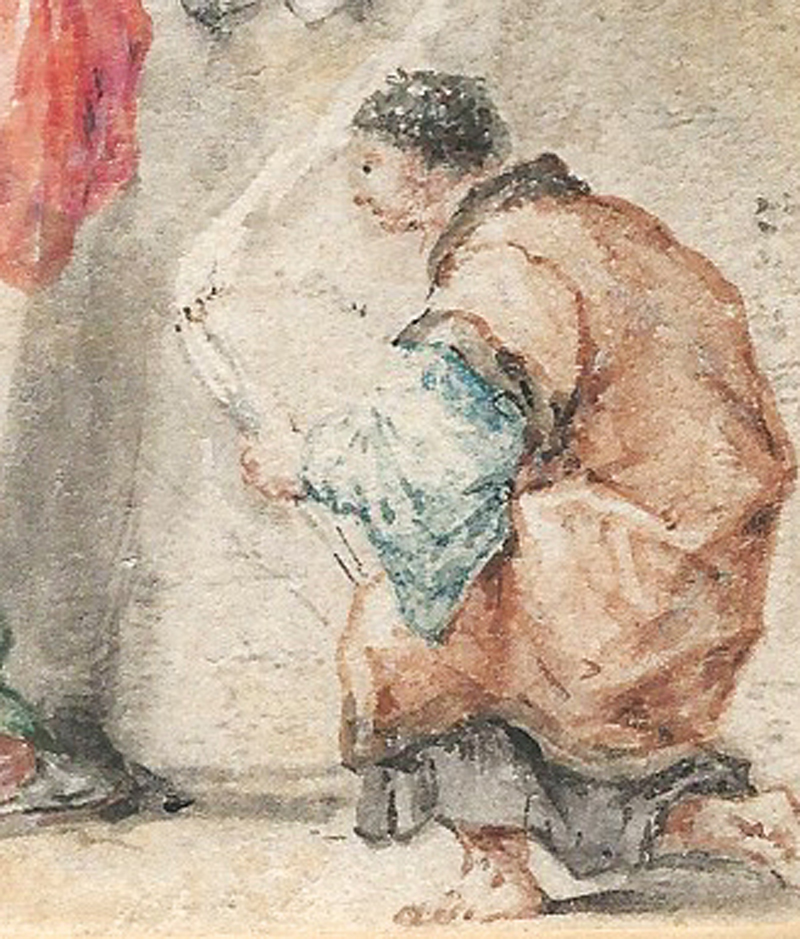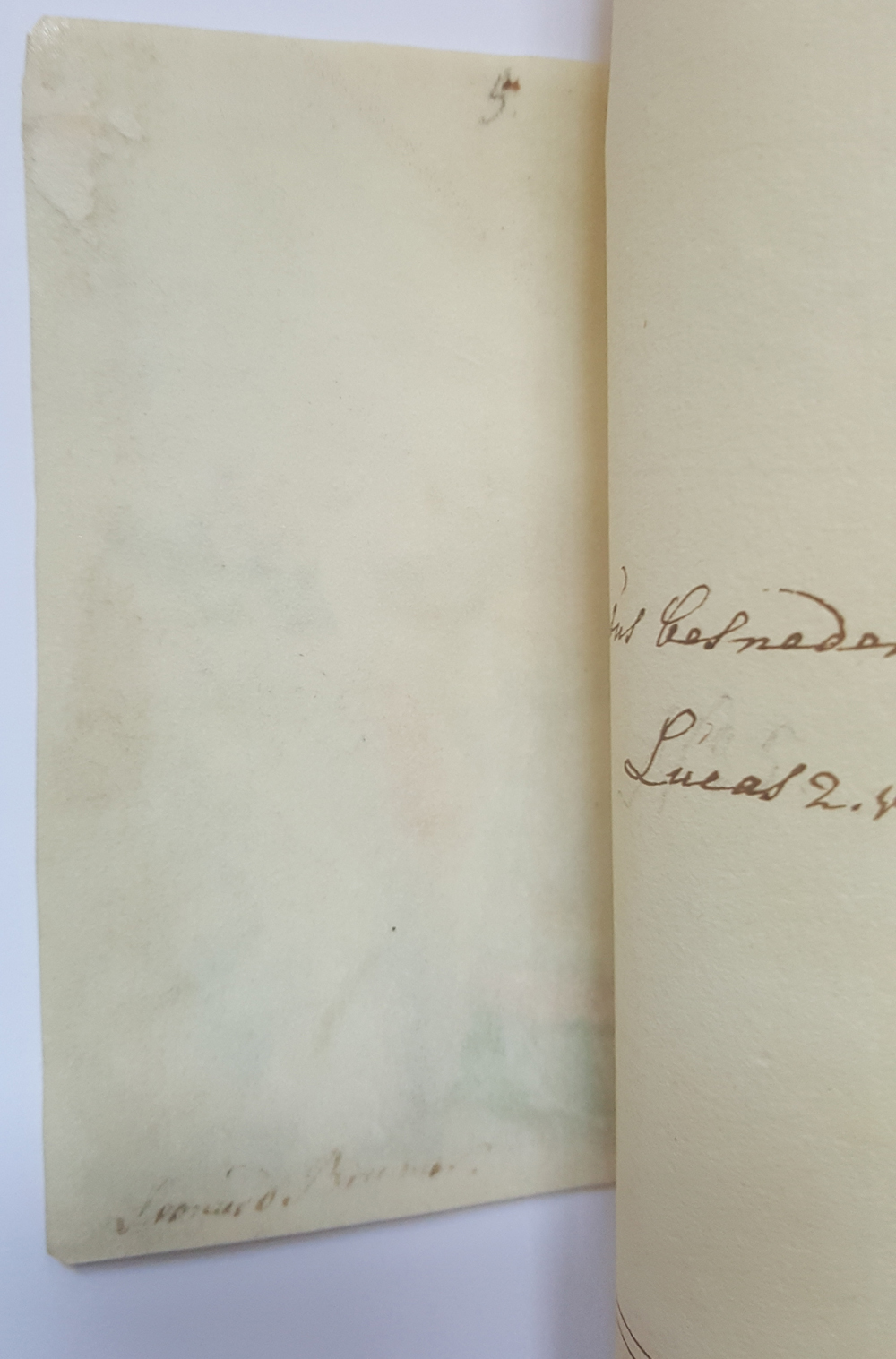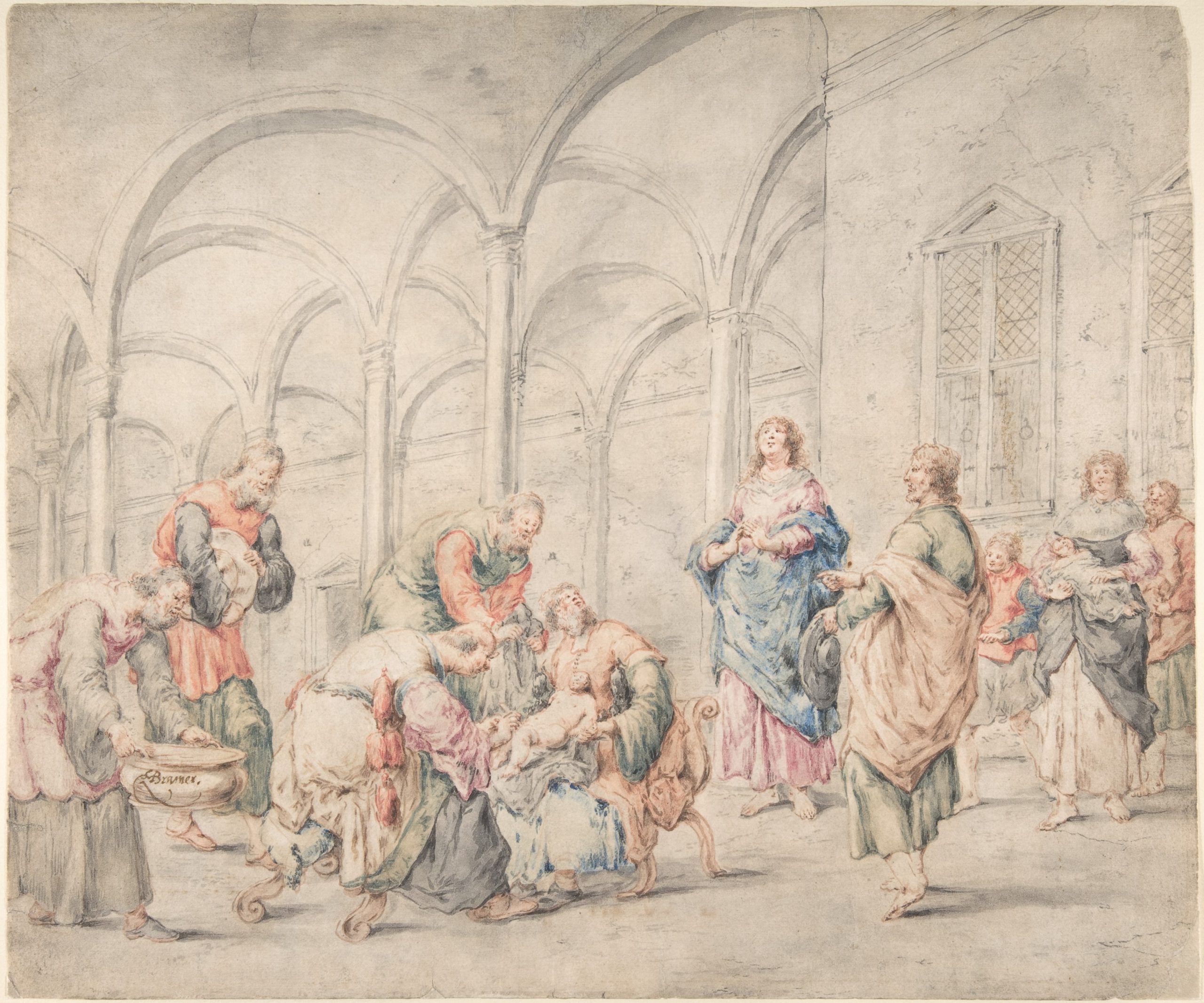LEONAERT BRAMER (Delft 1596 – 1674 Delft)
Leonaert Bramer (Delft 1596 – 1674 Delft)
The Circumcision of Christ
Brush and grey ink and watercolour on vellum, 118 x 93 mm (4.6 x 3.7 inch); hinged onto an 18th- or 19th-century collector’s mount with framing lines in pen and brown ink
Inscribed ‘Leonard Bramer’ and numbered ‘5’ (pen and brown ink, verso); inscribed ‘Jesús besneden / Lucas 2. vers 21’ (pen and brown ink, on mount)
Provenance
~ With C.G. Boerner, Düsseldorf, 1973
~ F.C. Butôt (1906–1992), Sankt Gilgen; his sale, Sotheby’s, Amsterdam, 16 November 1993, lot 53, repr.
~ Dr Hilary Koprowski (1916–2013) and Dr Irena Koprowska (1917–2012)
***
Leonaert Bramer is one of the most intriguing and at the same time most underrated artists of the Dutch seventeenth century.1 He travelled widely in Italy and France from 1614 to 1628. In Rome he was one of the founders of the Bentvueghels group of Northern artists and was involved in several street brawls, including one famously with Claude Lorrain. Bramer drew on a variety of influences for his most characteristic paintings - small nocturnal scenes with vivid effects of light. Works such as the Scene of Sorcery (Bordeaux) have earned him the reputation of an interesting independent who cannot easily be pigeonholed. Bramer was also one of the few Dutch artists to paint frescoes in Holland, but none of his work in the medium survived.
Bramer evidently knew well the greatest of his Delft contemporaries, Johannes Vermeer, for he came to the latter’s defense when his future mother-in-law, Maria Thins, was trying to prevent him from marrying her daughter. In fact, it is likely that Bramer, rather than Carel Fabritius, was Vermeer's teacher. Bramer had a wide-ranging interest in European literature and illustrated Virgil's Aeneid, Till Uilenspiegel, and various Spanish novels, always in a style as much Italian and French in origin as Dutch. Because of his originality in choosing subject matter, the subjects of his works are often difficult to identify.
This charming drawing on vellum must originally have been part of a series of the Life of Christ, intended to be sold to a private collector, as is evidenced by Bramer’s employment of the expensive vellum as support. It is thought that Bramer’s coloured drawings were executed towards the end of his career, during the 1660s.2 The artist is unique in Dutch art of this period in his preference for coloured drawings of religious scenes, which he made in large numbers. Some twenty series of the Life of Christ are known, some originally consisting of around ten or twelve sheets, others of as many as fifty. This is the case with a set that survives complete in its original binding in a private collection in The Netherlands.3
The Circumcision was a subject that was particularly beloved by Bramer, who depicted it many times. A comparable yet larger drawing of the same subject is preserved in the Metropolitan Museum in New York, although the colours in the New York sheet have not survived as freshly as those in our drawing, which is likely to have been preserved in a collector’s album (fig.).4 Another Circumcision by the artist is preserved in the Groninger Museum.5
The last owner of this sheet was Dr Hilary Koprowski, an American immunologist and virologist of Jewish-Polish descent, who developed the first effective polio vaccine.
SOLD
1. For the artist, see: Jane ten Brink Goldsmith and Michiel C. Plomp, Leonaert Bramer 1596-1674, ingenious painter and draughtsman in Rome and Delft, Zwolle 1994.
2. See Ten Brink Goldsmith and Plomp, op. cit., p. 197 and p. 266.
3. See Ten Brink Goldsmith and Plomp, op. cit., cat. no. 40, pp. 266-69 and figs. 40a-d
4. Point of the brush, watercolour and grey wash, over black chalk, 303 x 361 mm; inv. no. 1994.19; see Frima Fox Hofrichter, Leonaert Bramer 1596-1674: A Painter of the Night, exh. cat. Wisconsin 1992, cat. no. 52, pp. 112-113, repr.
5. Point of the brush in grey, gray wash, heightened in white, on blue-grey paper, 205 x 154 mm; inv. no. B 454; see J. Bolten, Nederlandse en Vlaamse tekeningen uit de zeventiende en achttiende eeuw, keuze van tekeningen in de verzameling van het Groninger Museum voor Stad en Lande, Groningen 1965, cat. no. 25, repr.
